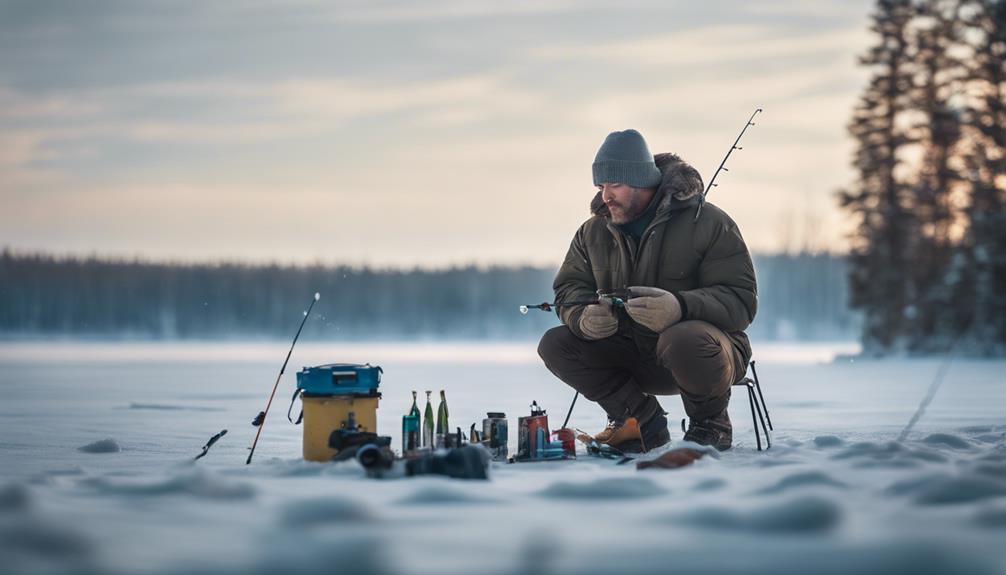Fly fishing enthusiasts know that having the right gear is crucial for a successful day on the water. Among the essential equipment that every fly fisherman should consider are waders. In this comprehensive guide, we will explore the various types of waders for fly fishing, their features, and how to choose the right pair for your needs. By the end of this article, you’ll be well-equipped to make an informed decision and enhance your fly fishing experience.
Understanding the Importance of Waders in Fly Fishing
Waders are waterproof garments that allow anglers to wade into water while keeping dry and comfortable. For fly fishing, waders are particularly important as they provide protection from cold water and allow for greater mobility in reaching the best fishing spots. Whether you’re standing in a river or navigating a lake, having the right waders can significantly improve your fishing efficiency and comfort. Understanding the importance of waders for fly fishing can help you appreciate the nuances of different designs and materials available today.
Types of Waders for Fly Fishing: Which One is Right for You?
When it comes to waders for fly fishing, there are several types to choose from, each designed for specific conditions and preferences. The primary categories include:
1. Hip Waders: These extend to the hips and are ideal for shallow water fishing.
2. Chest Waders: Offering full coverage, chest waders are perfect for deep water conditions and provide additional insulation.
3. Convertible Waders: These can be converted from chest waders to waist waders, providing versatility for different fishing environments.
Each type of wader has its own advantages, and your choice will depend on the type of fishing you plan to do, the water conditions, and personal comfort preferences.
Materials Matter: Choosing the Right Fabric for Your Waders
The material of your waders plays a significant role in their performance and comfort. Common materials used for waders include:
1. Neoprene: Known for its excellent insulation properties, neoprene waders are great for cold water fishing but can be less breathable.
2. Breathable Fabric: Made from materials like Gore-Tex, breathable waders are lightweight and allow moisture to escape, making them suitable for warmer weather.
3. Canvas: While not as commonly used, canvas waders are durable and often more affordable, making them a good choice for beginners.
Choosing the right fabric will depend on the climate and water temperature where you plan to fish. If you expect to fish in colder waters, neoprene might be the best option, while breathable fabrics are ideal for warmer conditions.
Sizing and Fit: Ensuring Comfort and Functionality
When selecting waders for fly fishing, proper sizing and fit are critical for comfort and functionality. Waders come in various sizes, and it’s essential to consider your height, weight, and even shoe size. Many brands offer size charts to help you find the perfect fit.
Additionally, consider trying them on with the type of clothing you plan to wear underneath, as layering is common during fishing trips. A snug fit is important, but ensure there’s enough room for movement, especially around the knees and hips. Remember, poorly fitting waders can lead to discomfort and even injury during long fishing sessions.
Insulation and Breathability: Balancing Comfort and Protection
Finding the right balance between insulation and breathability is essential when choosing waders for fly fishing. If you plan to fish in colder waters, look for waders with built-in insulation or thicker materials. On the other hand, if you expect to fish in warmer climates, prioritize breathable fabrics that will keep you cool and comfortable.
Some high-end models offer features like adjustable straps and vents to help regulate temperature. This adaptability can make a significant difference during long hours on the water, allowing you to focus on fishing rather than discomfort.
Wader Accessories: Enhancing Your Fly Fishing Experience
To maximize the effectiveness of your waders for fly fishing, consider investing in additional accessories. Essential wader accessories include:
1. Wader Socks: Thick, moisture-wicking socks provide added insulation and comfort.
2. Wader Belt: A wader belt can help keep water out and provide additional support.
3. Wader Repair Kit: Accidents happen, and having a repair kit on hand can save your day on the water.
Each of these accessories can enhance your overall experience and ensure you’re well-prepared for any situation while fly fishing.
Maintenance Tips for Longevity of Your Waders
Taking proper care of your waders can significantly extend their lifespan, making them a worthwhile investment. Here are some maintenance tips to keep in mind:
1. Rinse After Use: Always rinse your waders with fresh water after fishing, especially if you’ve been in saltwater or muddy conditions.
2. Dry Properly: Hang your waders to dry in a cool, shaded area. Avoid direct sunlight, as it can damage the material.
3. Inspect Regularly: Regularly check for any wear and tear, especially at seams and booties, and address any issues promptly.
By following these simple maintenance tips, you can keep your waders in excellent condition for many fishing trips to come.
Conclusion: Making the Right Choice for Your Fly Fishing Adventures
Choosing the right waders for fly fishing is crucial for both comfort and success on the water. By understanding the various types, materials, sizing, and maintenance tips available, you can make an informed decision that suits your fishing style and environment. Investing in a quality pair of waders will not only enhance your fishing experience but also ensure you’re prepared for whatever nature throws your way. Take the time to explore your options, and you’ll be well on your way to enjoying countless successful fly fishing adventures.
